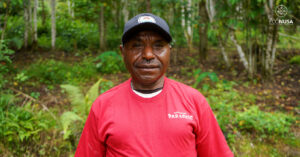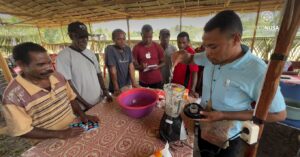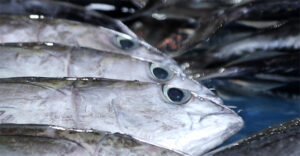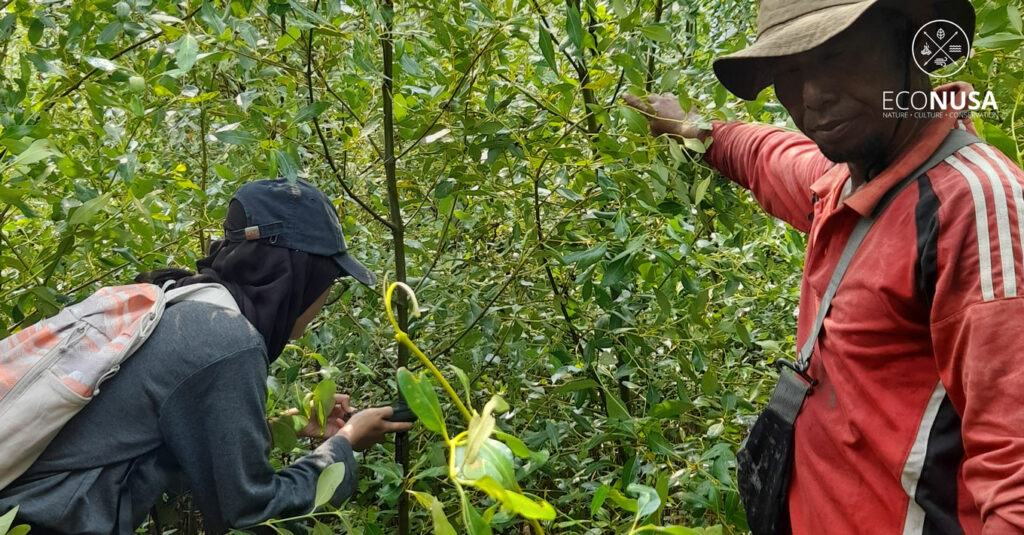
Mangroves are essential ecosystems that provide various environmental services, including coastal protection, habitat for diverse aquatic biota, and carbon sequestration. The high value and environmental services they offer make mangrove areas susceptible to various forms of exploitation, such as aquaculture (Pendleeton et al., 2012). Mangrove area degradation occurs because aquaculture development requires land clearing within mangrove regions, including sediment removal. Meanwhile, the carbon storage capacity in sediments is higher compared to the mangroves themselves (Murray et al., 2011).
The Pre-Feasibility Study on the fish pond located in Sungai Pasir Village, Sukamara Regency, Central Kalimantan aims to determine the carbon storage in the aquaculture area to analyze the impact of its utilization. This study evaluates three aspects: (1) the condition of mangrove vegetation, including the Importance Value Index (IVI) such as dominance index, species richness index, species diversity index, and evenness index; (2) the value of carbon reserves in the mangrove ecosystem; and (3) the value of carbon reserves in the fish pond to measure soil carbon reserves.
This research focuses on traditional fish ponds constructed by the local community. These ponds are located along the coast in Sungai Pasir Village, built by clearing mangrove land situated 150 meters from the shoreline. The aquaculture commodities cultivated in these ponds are shrimp and milkfish. In traditional ponds, most farmers cultivate milkfish, while a small portion of them raise tiger prawns.
This research found various mangrove species in Sungai Pasir Village, including Acrostichum speciosum, Avicennia alba, Nypa fruticans, Rhizophora mucronata, and Sonneratia caseolaris. The highest IVI values were 175.55 for seedlings, 192.72 for saplings, and 300 for poles and trees. IVI is used to determine the species composition and dominance of a species within a forest stand or vegetation. The mangrove composition in Sungai Pasir Village is dominated by Avicennia alba, with low levels of diversity, richness, and evenness.
The total area of mangroves at the research site is 4.24 hectares. The calculation of mangrove carbon considers the carbon stock in three carbon pools: above-ground biomass, below-ground biomass, and soil organic carbon. Carbon storage assessment was conducted for three land cover classifications: low-density mangroves, medium-density mangroves, and high-density mangroves.
The average carbon stock in the above-ground vegetation of mangroves is estimated to reach 18.18 tons C/ha, with CO2 sequestration amounting to 66.72 tons CO2e/ha. Additionally, the average below-ground carbon stock in mangrove vegetation is 8.34 tons C/ha, contributing to below-ground carbon storage of 30.61 tons CO2e/ha.
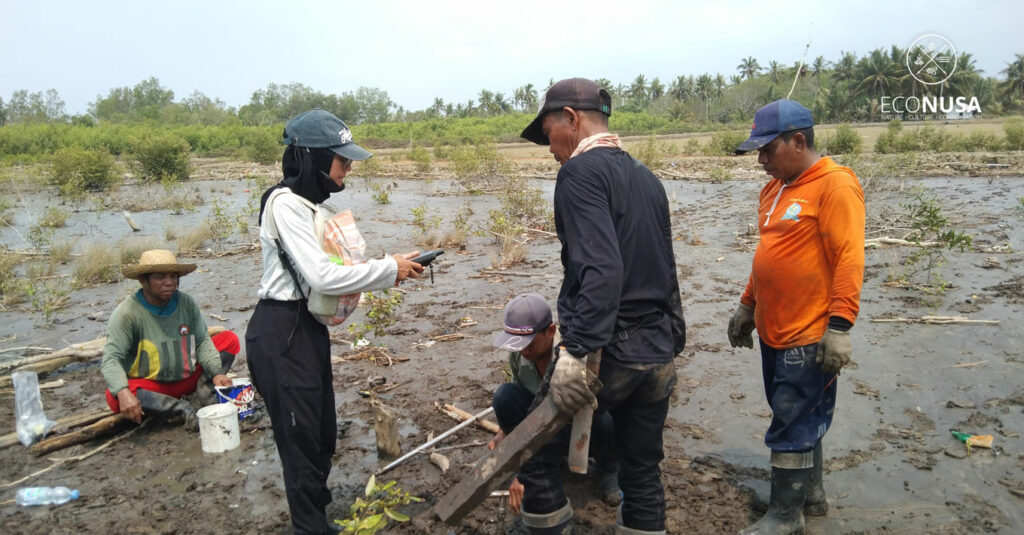
Soil carbon measurement in the Sungai Pasir mangrove ecosystem at a depth of 0-400 cm yielded a total soil carbon stock of 2,273.54 tons C/ha for low-density mangroves, 2,320.91 tons C/ha for medium-density mangroves, and 2,601.78 tons C/ha for high-density mangroves. This is equivalent to a carbon dioxide sequestration contribution of 8,343.90 tons CO2e/ha, 8,517.74 tons CO2e/ha, and 9,548.55 tons CO2e/ha, respectively.
The average carbon stock at the site is estimated to be 2,398.75 tons C/ha, with a CO2 sequestration contribution of 8,803.40 tons CO2e/ha. The carbon stock observed in this study exceeds the average soil carbon stock in the Mahakam Delta (879 tons C/ha; Arifanti et al., 2019), surpasses the average carbon stock in Indonesia (849 tons C/ha; Murdiyarso et al., 2015), and is higher than the global average carbon stock reported by the IPCC (2014), which is 471 tons C/ha.
There is a difference in total carbon stock between the mangrove forest ecosystem and the fish pond in Sungai Pasir Village. The average total carbon stock in the mangrove forest ecosystem is 2,424.83 tons C/ha, ranging from 2,280.35 tons C/ha to 2,636.39 tons C/ha across the three different land cover types. However, the average carbon stock in the fish pond ecosystem is 1,938.06 tons C/ha.
From the Pre-Feasibility Study, the calculation of carbon reserves and the contribution of CO2 absorption recommends mangrove restoration in Sungai Pasir Village to have a positive impact in the long term. Moreover, the study by Sidik et al. (2019) stated that after ten years of restoration, mangrove forests can again achieve ecosystem functions and services similar to natural stands. Restoration efforts are strategic to support climate change mitigation efforts and reduce greenhouse gas concentrations.


